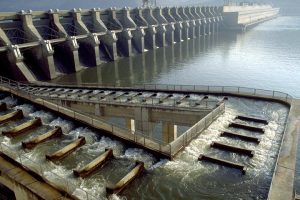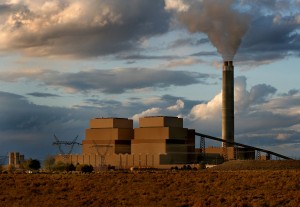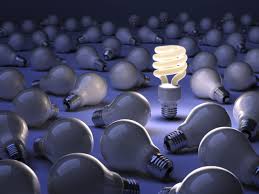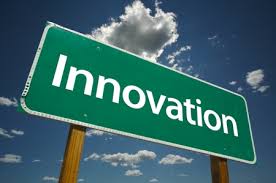11 item(s) were returned.
Director, Market Development & Business Affairs
Whooshh Innovations
Several years ago, the Department of Energy (DOE) issued a report on the energy potential of the thousands of non-powered dams in the US. With a significant number of untapped sources readily available, it makes sense to consider how we can utilize more of this emissions-free resource by “unleashing hydropower”. Many companies have attempted to shepard one of the more than 80,000 non-powered dams through the hydropower licensing process at the Federal Energy Regulatory Commission (FERC) only to find that unanticipated obstacles can arise like the requirement for fish passage. Often, FERC imposes a condition on the issuance of a… [more]
View InsightProject Manager, EDF+Business
Environmental Defense Fund
The Trump administration recently released its full federal budget proposal, which could slash funding for the DOE Office of Energy Efficiency and Renewable Energy (EERE), related offices and programs, and damage a future clean energy economy. EERE has been at the forefront of supporting successful public-private partnerships and innovative, clean energy entrepreneurs. Funding that nurtures new businesses without requiring their owners to give up any stake in their companies can be make-or-break for the early-stage startups that drive innovation. When government, well-positioned to make this kind of unique investment, puts forth taxpayer dollars, it encourages the private sector to buy-in… [more]
View InsightAs a party to the Paris Climate Agreement, the United States affirmed its continued commitment to significantly reducing carbon emissions by 2025. According to the Department of Energy and the International Energy Agency, achieving large CO2 reductions will require an “all of the above approach” with new and innovative energy technologies, such as carbon capture playing a primary role in any successful CO2 mitigation strategy. Carbon capture and sequestration (CCS) have been receiving bipartisan support from a number of policymakers. In February Representative Mike Conaway (R-TX 11th Dist.) introduced a bill, which would expand and create a permanent tax credit… [more]
View InsightPresident
The Stella Group, LTD
Over 20 states are reviewing their net-metering rules for solar energy and at least 10 are conducting value of distributed generation studies. But is this just delaying the inevitable — that states must embrace policies that promote energy conservation technologies rather than sustain their traditional grids? And are solar energy systems the only culprit? In fact, energy conservation technologies have already significantly impacted baseload demand patterns. According to the Department of Energy (DOE), light-emitting diode (LED) installations increased in all applications between 2012 and 2014, more than quadrupling to 215 million units overall. Energy Star notes “In 2014…American families and… [more]
View InsightThe Department of Energy’s (DOE) Advanced Research Projects Agency for Energy (ARPA-E) is responsible for funding transformational energy technologies that are too early in their development to attract private-sector investment. Projects funded by ARPA-E are typically considered high-risk investments due to the long and arduous incubation period for energy technologies. However, in 2015, the 2% of total project applications that ARPA-E funded raised questions about the agency’s tolerance for risk. Because the program has been under pressure to achieve results quickly, some have suggested that it has been more inclined to invest in projects that have a higher chance of… [more]
View InsightPrincipal
Brinch Consulting
Changes in the electric power industry are well underway in many states across the U.S. As a result of numerous drivers – including the need to address climate change, natural gas prices, retiring coal plants, the pace of grid modernization – many electric utilities are changing the way they interact with their customers and considering how to adapt their business and planning models. Third party vendors are marketing new energy services (view site to know more about the marketing firm that is helping them) and regulators, legislators, and consumer advocates are evaluating the existing policy landscape to consider ways to… [more]
View InsightSenior Policy Analyst
Information Technology and Innovation Foundation
Don’t be fooled by the lack of “climate” in the policy title — the America COMPETES Act is just as important to addressing climate change as it is to its originally stated goal of strengthening U.S. international competitiveness. The legislation — which was passed in 2007, first reauthorized in 2010, and is up for reauthorization again this year — directly supports science and technology institutions that underpin the United States innovation infrastructure, including the development of clean energy. The COMPETES Acts has supported clean energy innovation through creation of the DOE’s ARPA-E and proposed a long list of educational reforms.… [more]
View InsightEnergy innovation and American technological leadership has been a big point of focus in energy policy circles over the past decade. There exists a variety of strategies and plans to drive and support energy innovation, each informed by a combination of history, political and economic ideology, and circumstance, but none of them seem to have taken hold yet. Many advocate government investments in R&D, often differing on which technologies or research areas deserve funding, while others promote a more hands-off role that would see government lift the regulations that many believe stifle private sector investment and innovation. Some advocate pricing… [more]
View InsightA recent report from the Bipartisan Policy Center, Energy Innovation at the Department of Defense: Assessing the Opportunities, challenges the assumption that the DoD can function as a be-all-end-all driver of U.S. energy. From the report: “DoD’s historical record on energy innovation is extraordinary, and there is reason to hope that important advances might come from a renewed effort in this area. But there also appear at present to be significant limitations upon the scope and scale of DoD’s likely influence on technological advance that can contribute to the nation’s energy infrastructure as a whole, and particularly to the development… [more]
View InsightA study of successful cap-and-trade schemes published in the Proceedings of the National Academies of Science found that cap-and-trade policies – a widely favored tool in climate change mitigation – do not necessarily provide sufficient incentives for firms to innovative environmentally-preferable processes and technologies. This finding is significant, as a central argument in favor of cap-and-trade schemes is that they provide price signals that lead firms toward innovation. The study’s author, Margaret Taylor, a researcher at Lawrence Berkeley National Laboratory, notes that compliance costs are frequently overestimated by firms and policymakers during the cap-and-trade schemes’ formulation. Because of this, capped… [more]
View Insight






